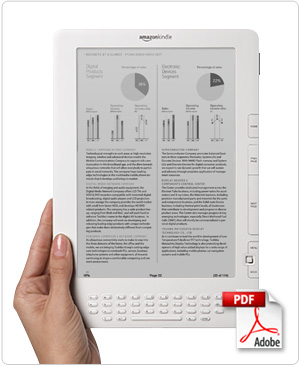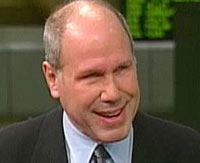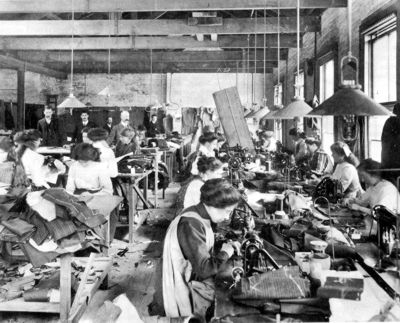 Amazon.com is finally addressing complaints about licensing fees for its Kindle reader. Starting next month, the online retailing giant will give newspapers 70% of revenue from digital versions of their publications sold in Amazon’s Kindle Store. That’s what Apple and Google give developers for their iPhone, iPad and Android devices, so Amazon is merely playing catch-up.
Amazon.com is finally addressing complaints about licensing fees for its Kindle reader. Starting next month, the online retailing giant will give newspapers 70% of revenue from digital versions of their publications sold in Amazon’s Kindle Store. That’s what Apple and Google give developers for their iPhone, iPad and Android devices, so Amazon is merely playing catch-up.
Amazon also introduced Kindle Publishing for Periodicals, a program that’s intended “to speed up the process of producing a version of the newspaper for the many platforms where Kindle software can be downloaded,” according to CNN
Amazon has been criticized for being greedy in the royalties it extracts from news publishing clients. The change in royalty payments brings it in line with industry standards, and the new publishing platform is said to make it relatively painless for clients to get their content on Kindle-compatible devices, including the iPhone, iPad and Android. The move also appears to be aimed at the scarcity of iPhone-savvy coders, which is somewhat limiting the growth of that platform. ” Apple has sold more than 125 million gadgets — iPhones, iPods and the iPad — that run its mobile operating system. But finding developers capable of coding software for the system can be difficult and expensive,” CNN said.
Take Two Tablets and Call Me…
How big is the tablet market going to be? Really, really big, says Gartner, which sees nearly half a billion tablets selling in 2013 alone. The sudden explosion of this market seems curious in light of the fact that tablet – or “slate” – computers have been around for more than a decade. Gartner casts some interesting light on this phenomenon.

Early table computers were mainly Windows machines, meaning that they differed from PCs only in form. Gartner points out that, in contrast, the usage model of the new breed of tablets “is closer to what consumers do with a smartphone…It is about running applications, playing games, watching video content, reading books and magazines…If you can do all of this without having to take five minutes to boot up, without having to look for a power outlet after a couple of hours… and with a user interface that allows you to easily get to what you need, why would you not buy a media tablet?” Makes sense.
We were at the Web 2.0 Summit this week, which ordinarily would have been lousy with laptop computers. However, we estimate that about one third of the attendees were toting iPads. Part of this trend is Silicon Valley chic, no doubt, but there’s no question that one appeal of the iPad is that it takes about 10 seconds to boot and the battery doesn’t die after 90 minutes. We found ourselves staring lovingly at the iPads being hoisted by others in our row as our laptop battery drained to zero.
Early tablet-makers obsessed over features like handwriting recognition and supporting an 800 X 600 screen. Apple chose instead to reinvent the experience around user need. Gartner sees the cost of tablets quickly dropping to under $300 as competition increases. Meanwhile, publishers are being careful not to screw up this market opportunity like they did the Web.
WaPo Gets Hyperlocal
The Washington Post is floating ideas about its next foray into online news and it looks like it’s going hyperlocal with a vengeance. TBD, itself a recent D.C.-area startup, reads the tea leaves from a recent Post survey and deduces that the newspaper is planning a major mobile thrust with a social networking flavor. TBD also quotes an anonymous source saying the plans include “this new crop of sites would be even more hyperlocal than AOL’s Patch.com sites that are now spreading around the region. The mission of the Patch sites is to dig deep on municipal news, including school board meetings, high school sports, trash collection and the like.
The new Post initiative, says a source, would “carve things up even more micro” than the Patch sites, as in subdivision by subdivision. It’s unclear how the Post would fund such an initiative or find the volunteer citizen sources to do the reporting, but it’s breaking with the pack in making such a strong commitment to local coverage. Few publishers have the cash – or the cajones – to disrupt their traditional model to that degree.
Speaking of the Post, it just released a new iPad app that aggregates “social media conversations, videos, photos and user engagement through Twitter and Facebook about the top three to five issues of the day,” according to a press release picked up by Editor & Publisher. It’s free here for now, $3.99/mo. beginning in February.
Miscellany
 US News & World Report, the former newsweekly that has been monthly for the last couple of years, will stop publishing its monthly magazine in 2011. The magazine, which is famous for its annual rankings of the best colleges, hospitals, personal finance and other businesses, will continue to publish the rankings in print along with four special topic issues. Everything else will go online.
US News & World Report, the former newsweekly that has been monthly for the last couple of years, will stop publishing its monthly magazine in 2011. The magazine, which is famous for its annual rankings of the best colleges, hospitals, personal finance and other businesses, will continue to publish the rankings in print along with four special topic issues. Everything else will go online.
US News has long been the weakest competitor in a three-horse race dominated by Time with Newsweek a distant second. The whole newsweekly sector has been devastated by online competition, forcing the Washington Post Co. to sell Newsweek this summer. Its circulation has plunged more than 25% in the last year.
The San Diego Union-Tribune is turning the tables on the traditional model of selling a printed newspaper and giving away electrons for free. The struggling daily, which was bought by private investment firm Platinum Equity last year, is offering readers a free copy of the print edition when they use their mobile phones to check in on Foursquare, Gowalla or Facebook. All a checked-in member has to do is show a mobile device to workers at kiosks around the city. We’re sure the U-T’s newsdealers are just thrilled about this idea.
The Oregonian just got a $50,000 grant from the Knight Foundation via the American University’s J-Lab, and it’s going to spend the money on hyperlocal journalism. Read Editor Peter Bhatia’s passionate and persuasive argument for the need to adopt a “big tent” strategy and partner with localized news outlets of all shapes and sizes in order to “offer a level of local and neighborhood detail our staff…cannot get to.” It’s nice to see a newspaper editor embracing amateur journalism instead of dismissing it. “In the digital media world there really aren’t any limits on who can gather news and distribute it. Anyone with a laptop can create journalism,” he writes. The usual assortment of nut-nut commentators weighs in with their spew about how Bhatia is ruining the newspaper. He responds with admirable restraint.
Gannett Blog estimates that USA Today has five reporters covering Congress and 27 covering entertainment. We have no idea if those numbers are true, but if they are, we are going back to bed and putting a pillow over our head.


















